Noblesville Organic Farm Utilizes Indiana NRCS Assistance to Address Food Insecurity
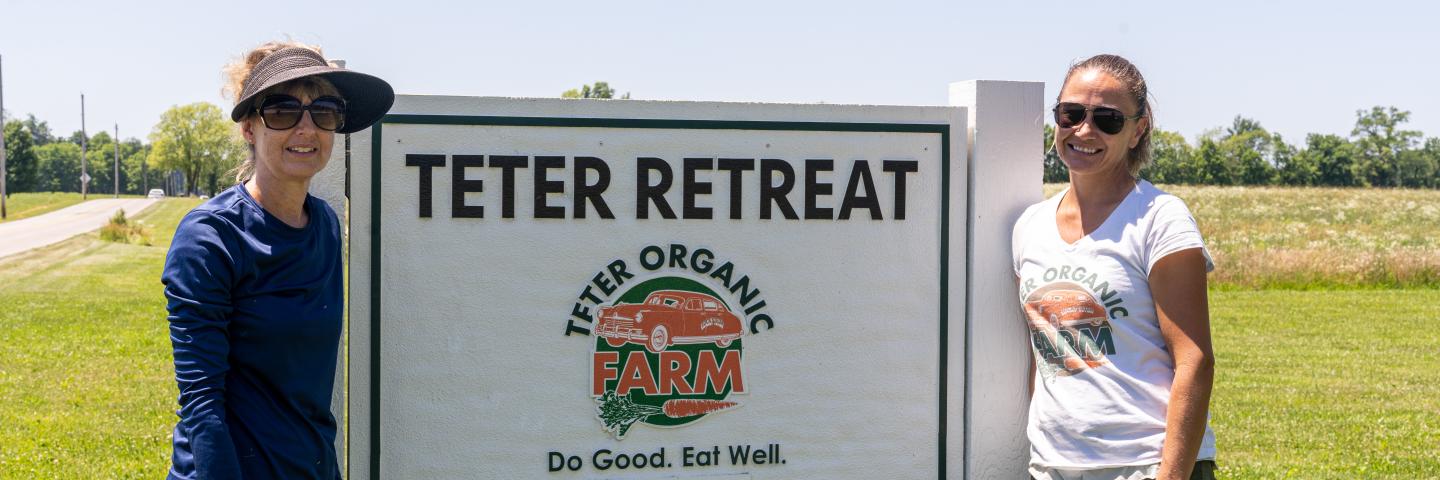
Teter Organic Farm, which is a mission of Noblesville United Methodist Church, has donated more than 100,000 servings of food since its inception in 2016 and worked with NRCS through EQIP and CSP to help expand its mission.
By Brandon O'Connor, Public Affairs Specialist, USDA-NRCS, Indianapolis
As the 2022 growing season kicked into high gear, Katy Rogers had a lofty goal.
Rogers, who is the farm manager at Teter Retreat Center and Organic Farm in Noblesville, Indiana, wanted to grow 25,000 servings of organic vegetables on the roughly eight-acre farm to give away to local food banks.
That has been the mission of the organic farm at Teter since it was started in 2016. They also grow market produce that is sold through a 100-share community supported agriculture (CSA) program, at local farmer’s markets and to restaurants. Proceeds from the sales are all used to support the overarching mission to address food insecurity in Hamilton County, where the farm is located.
Despite being the richest county in Indiana with a median household income of more than $100,000 according to 2021 U.S. Census data, more than 22,000 Hamilton County residents, about 7% of the county’s population, have been deemed food insecure by Feeding America each year since 2017.
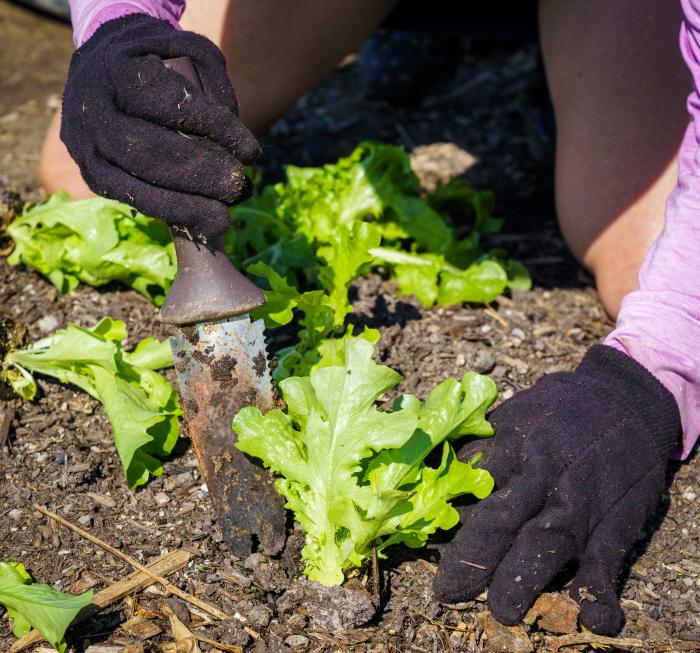
Teter is working to address that issue by donating to a local food bank which then distributes the food to Hamilton County residents in need. Since 2016, Teter, which is a mission of Noblesville United Methodist Church, has donated more than 100,000 servings of food based on U.S. Department of Agriculture serving sizes which the food bank uses to translate pounds of produce into a serving. In 2021 they donated 21,113 servings, and in 2022 they met their goal by donating 25,000 servings to local food banks.
“There's a lot of stereotypes out there, but they are overwhelmingly people that are doing the best that they have the opportunity to do, life is tight and they are paycheck to paycheck,” Rogers said of the people they support. “As much as it costs to live in this area, it takes one hiccup and you can be in real trouble.”
As she walks through the farm on a hot and cloudless day in late July in work boots, green work pants and a Teter Farm t-shirt with rolled sleeves and the request to “Ask me about community supported agriculture,” on the back, the future harvests are starting to take shape.
Volunteers worked together during multiple field days in April to plant seedlings and the fruits of their labor are starting to come to fruition. Rows upon rows of lettuce, eggplant, tomatillos and more fill the open-air fields. More grows in the two high tunnels and the low tunnel the farm has added in recent years.
It is the three tunnels that have played the largest role in the farm increasing its output year over year. According to Farmer’s Almanac, the average growing season in Noblesville lasts 169 days from April 28 to Oct. 15. With the addition of the tunnels, Rogers and Teter Farm can extend that season about a month and a half on each side, drastically increasing how much food they can produce and donate. That matters, because as Rogers was quick to point out, “people eat year-round.” Just because it is winter doesn’t mean the needs of food bank disappear, so the longer they can grow and the more they can produce, the bigger impact the farm can have.
“For every tunnel we're adding a lot of growing time, a lot of ability,” Rogers said. “They're an unmitigated good for production, but it's not an inexpensive thing to build.”
The cost of building the structures was prohibitive for the farm to accomplish on its own, but they were able to construct them with assistance from USDA’s Natural Resources Conservation Service’s (NRCS) Environmental Quality Incentives Program (EQIP). Through EQIP, NRCS pays a portion of the cost to construct a high tunnel with the requirement that crops be planted directly into the soil profile.

Teter applied for EQIP contracts in 2018, 2019 and 2020 and each time received funding to build a tunnel. They have a fourth tunnel that was constructed in 2017, but the project was self-funded because the tunnel is used for germination and plants aren’t planted into the ground. Their eventual goal is to build six tunnels across the back of the property, and they have already submitted another EQIP application to receive assistance for the next tunnel.
“We wouldn't have the last three tunnels — the low tunnel and the two high tunnels — without EQIP,” said Pam Boyd, the volunteer representative on the Noblesville First United Methodist Church Board. “What we were able to do is basically say, 'Look, here's the cost share that we're going to get from USDA, but we have to raise the other half.'”
The EQIP applications were the continuation of a more than a decade long relationship between Teter and NRCS that predates the creation of the farm on the property. Surrounding the area where the farm is now are nearly 100 acres of forestland that follow a mile long stretch of the White River. Part of the area was historically farmed, but because of the proximity to the river it frequently flooded. Instead of trying to force production out of the area, the church decided in 2006 to enroll about 20 acres into the Conservation Reserve Program (CRP), which combines financial assistance from USDA’s Farm Service Agency with technical assistance from NRCS and provides landowners with annual rental payments to take areas out of production.
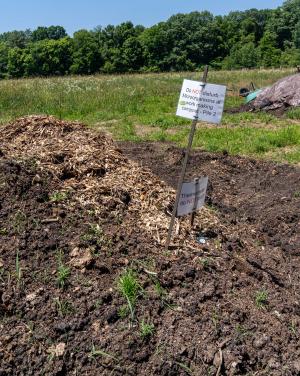
Under CRP they planted the area with bottomland timber and utilize it as part of the retreat center, which was the original purpose of the property. The church has owned the 120-acres that encompass the retreat center, organic farm and surrounding forestland since 1981 when church member Ruth Teter donated her family’s farm to the church upon her death. For the first 35 years, the church used the land primarily to fulfill Teter’s wish of establishing a retreat center while about 34 acres were leased to a local farmer for conventional row crop farming.
The organic farm and the food insecurity mission were added in 2016 by Noblesville United Methodist Church’s former pastor Aaron Hobbs after he returned from a trip and began charting a radical new mission for the row crop portion of the property.
During his trip, Hobbs had visited an organic farm and he became inspired to transform the conventional row crop farm at Teter Retreat Center into an organic vegetable farm to combat food insecurity in Hamilton County.
This when he called Angie Garrison, the local NRCS District Conservationist, for a field visit and plopped an ambitious holistic long-range plan in front of her and asked for advice. Seven years, three pastors and two farm managers later the dream is coming true.
They started small the first year by planting vegetables in a grass field at the front of the property that wasn’t part of the traditional farming operation, but they quickly worked to expand. First, they hired Tyler Gough from Indy Urban Acres, which serves a similar mission in neighboring Marion County, to create a master plan to transform the convention corn/soybean acres on the property into an organic farm. The church then hired a farm manager to start implementing the plan and growing food.
They began rapidly expanding in 2017 with the construction of their first high tunnel, which they used for seed germination. They also terminated the farming lease for the 34 tillable acres and moved the budding organic farm to the back of the field to provide a buffer from the conventionally farmed land across the street and allow room to expand. The organic farm now occupies about eight acres, while 20 acres are under an organically managed hay contract.
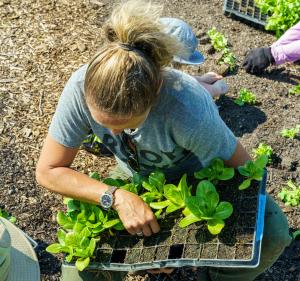
The eight acres used to grow produce are certified organic by USDA following a three-year record keeping process that began in 2017 as they transitioned the field away from conventional farming and the historic corn/soybean rotation that had taken place there.
As part of the transition, they also began focusing on soil health and regenerative agriculture, work Rogers has continued since taking over as farm manager in early 2020. That includes planting cover crops in between growing season, transitioning away from tillage and using tools that keep the soil profile intact when creating new beds for growing.
Along with being good stewards of the land on their farmable acreage, the church has started working with NRCS to ensure they are taking care of the forestland that makes up the vast majority of the property. Along with the three EQIP applications they submitted for high tunnel cost share assistance, they also applied for and received assistance through a 2021 EQIP contract to develop a forestry management plan. They have since applied for funding to remove invasive species and have plans to apply for assistance with tree plantings.
They have utilized NRCS’s free conservation technical assistance program to start planning a wetland they hope to restore in the coming years to address flooding issues in the current hay field and to implement drainage near the high tunnels. They have also continued to make improvements through the CRP program including tree thinning, a pollinator planting and installing a windbreak at the front of the property.
The rental payments from the CRP contracts and the lease payments from the 20-acre hay field play a major role, along with the CSA, in funding the food insecurity mission at Teter. That mission has only grown in importance in recent years as the COVID-19 pandemic and rising food prices led to increased demand at the Hamilton County Harvest Food Bank, which the farm supports.
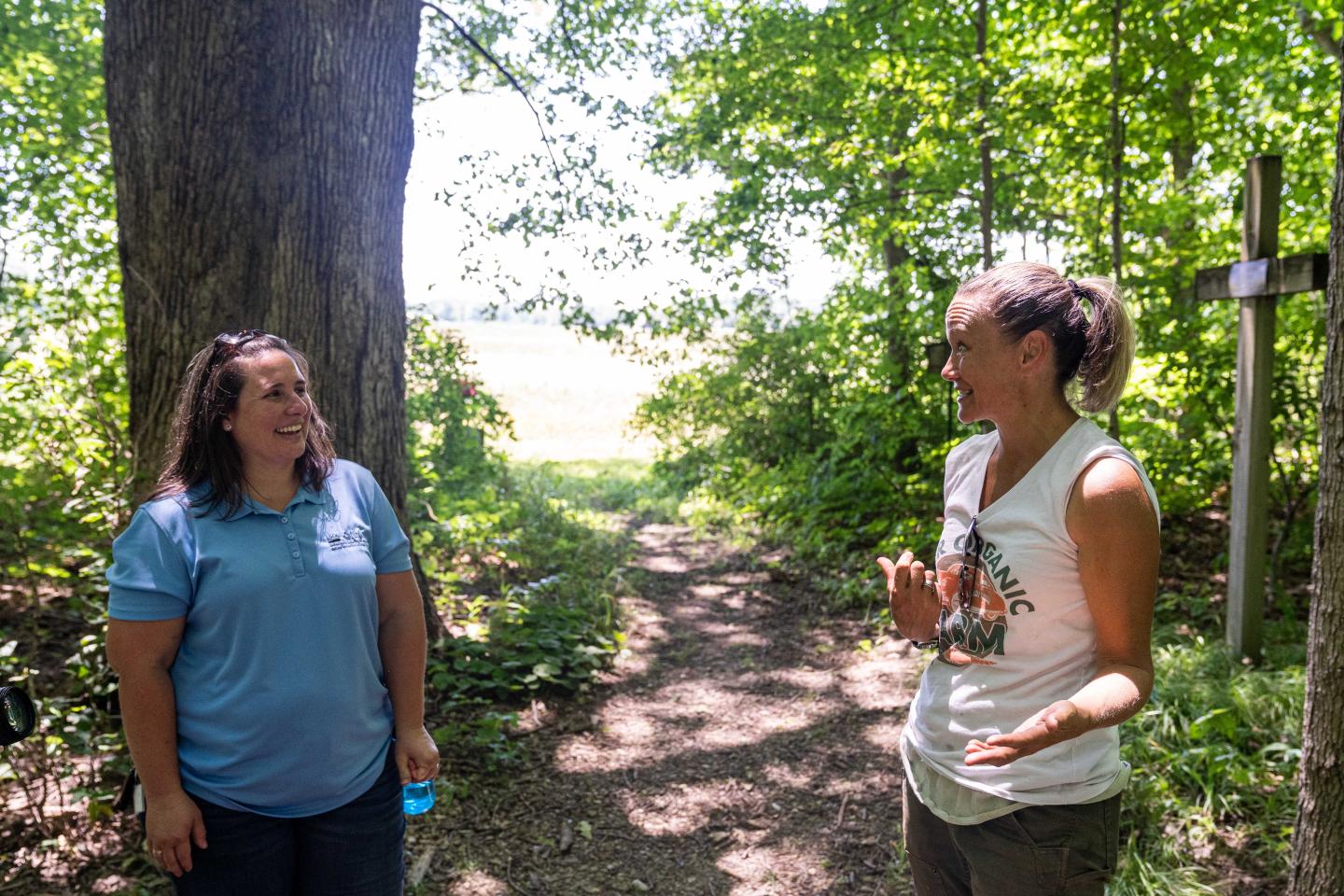
“Anecdotally, throughout the pandemic we saw nationally and at our own food banks and food pantries, about a 40% increase in requests,” Rogers said. “I don't know what the new numbers are going to come in at, but we cannot grow enough food.”
The farm is also working daily to impact the surrounding community by meeting not only their dietary needs, but by also providing a place for community building and environmental education. It is all part of the three-fold mission at Teter.
In addition to the environmental benefits, the CRP acres include hiking trails where CSA members and other can come explore nature. They also host educational programing to teach about soil health, pollinators and more. Through their educational and volunteer opportunities, Rogers sees the farm as an important avenue to expose people to agriculture, some for the first time.
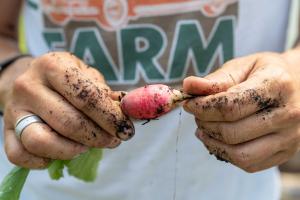
“Most of us grew up with parents or grandparents who had a tie to a farm,” Rogers said. “I know very few people in their 50s right now whose grandparents, somebody, didn't have a farm that you got to go to. That was just normal. As we see farms get larger, focus on efficiency and get less diverse, those little points of contact that were sprinkled throughout the community are less and less common.”
All three parts of the Teter Retreat Center and Organic Farm mission where on full display in mid-April as volunteers across the age spectrum came together to plant the seedlings that turned into this year’s crops. Kneeling in the dirt, Rogers taught them how to space the crops, the importance of diversity and then set them on their way. The work was slow as they planted lettuce three across, measured the space for the next row and then added two eggplants in between. But with each hole they dug they were working toward fulfilling the vision Hobbs had when he returned from his trip, to feed those in need and build community along the way.
Additional Information
Environmental Quality Incentives Program - Indiana
The Environmental Quality Incentives Program (EQIP) provides financial and technical assistance to agricultural producers and non-industrial forest managers to conserve natural resources while strengthening their operations.
Learn MoreConservation Stewardship Program - Indiana
The Conservation Stewardship Program (CSP) helps you build on your existing conservation efforts while strengthening your operation.
Learn MoreSmall/Urban Farming - Indiana
NRCS serves all agriculture – large to small, conventional to organic, rural to urban. As American agriculture continues to grow in new directions, NRCS conservation assistance is growing along with it.
Learn MoreINDIANA NRCS HOMEPAGE
For more information about NRCS programs offered in Indiana and how experts throughout the state can help you address natural resource concerns on your land, visit the Indiana NRCS homepage.

